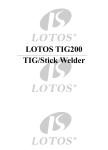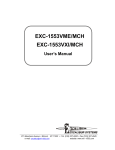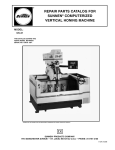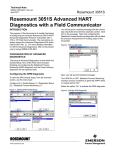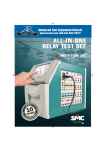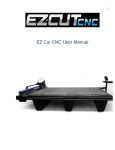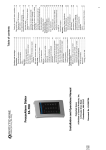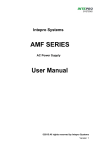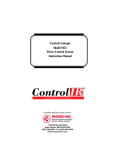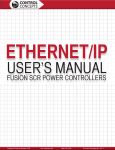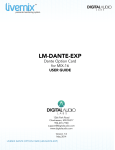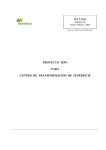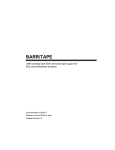Download Model 3629C User Manual - Precision Control Systems, Inc.
Transcript
Control Concepts Model 3629C Power Control System Instruction Manual Another quality product from: 7128 Shady Oak Road Eden Prairie, MN 55344 USA (952) 949-9009 Fax (952) 949-9559 www.researchinc.com CONTROL CONCEPTS INC. INSTALLATION MANUAL MODEL 3629C 7870 PARK DRIVE CHANHASSEN, MN 55317 (952) 474-6200 1-800-765-2799 FAX (952) 474-6070 www.ccipower.com CONTROL CONCEPTS, INC. 2 YEAR LIMITED WARRANTY CONTROL CONCEPTS, INC. warrants that the products delivered will be as described in the sales order or contract. CONTROL CONCEPTS, INC. warrants to the original user that CONTROL CONCEPTS, INC. products will be free from defects in materials and workmanship for a period of two (2) years after the date CONTROL CONCEPTS, INC. ships such products. If any CONTROL CONCEPTS, INC. product is found to be defective in material or workmanship during the applicable warranty period, CONTROL CONCEPTS, INC.’s entire liability, and purchasers sole and exclusive remedy, shall be the repair or replacement of the defective product at CONTROL CONCEPTS, INC.’s election. CONTROL CONCEPTS, INC. shall not be liable for any costs or expenses, whether direct or indirect, associated with the installation, removal or re-installation of any defective product. All shipping and freight costs are the responsibility of the customer. CONTROL CONCEPTS, INC.’s limited warranty shall not be effective or actionable unless there is compliance with all installation and operating instructions furnished by CONTROL CONCEPTS, INC., or if the products have been modified or altered without the written consent of CONTROL CONCEPTS, INC., or if such products have been subject to accident, misuse, mishandling, tampering, negligence or improper maintenance. Any warranty claim must be submitted to CONTROL CONCEPTS, INC. in writing within the stated warranty period. CONTROL CONCEPTS, INC.’s limited warranty is made in lieu of, and CONTROL CONCEPTS, INC. disclaims all other warranties, whether expressed or implied, including but not limited to any IMPLIED WARRANTY OF MERCHANTABILITY, ANY IMPLIED WARRANTY OF FITNESS FOR A PARTICULAR PURPOSE, any implied warranty arising out of a course of dealing or of performance, custom or usage of trade. CONTROL CONCEPTS, INC. SHALL NOT, UNDER ANY CIRCUMSTANCES BE LIABLE FOR ANY DIRECT, INDIRECT, INCIDENTAL, SPECIAL OR CONSEQUENTIAL DAMAGES (INCLUDING, BUT NOT LIMITED TO, LOSS OF PROFITS, REVENUE OR BUSINESS) OR DAMAGE OR INJURY TO PERSONS OR PROPERTY IN ANY WAY RELATED TO THE MANUFACTURE OR THE USE OF ITS PRODUCTS. The exclusion applies regardless of whether such damages are sought based on breach of warranty, breach of contract, negligence, strict in tort, or any other legal theory, even if CONTROL CONCEPTS, INC. has notice of the possibility of such damages. By purchasing CONTROL CONCEPTS, INC.’s products, the purchaser agrees to the terms and conditions of this limited warranty. WARNING: The Control Concepts, Inc. power controllers use power thyristors to switch voltage to the connected load. Line voltage must be assumed at the output terminals at all times, even when the control signal has been removed and the load voltage appears to be off. It has been mandated by the National Electrical Code and the Occupational Safety and Heath Act of 1970 that a physical disconnect be opened ahead of all remotely actuated controls before performing any maintenance work on the controller or its connected load. PROPRIETARY DATA © Copyright 2007, Control Concepts, Inc. Chanhassen, MN 55317 The information and design disclosed herein are the property of Control Concepts, Inc. and may not be used, reproduced or disclosed in any form except as granted in writing by: CONTROL CONCEPTS, INC 7870 PARK DRIVE CHANHASSEN, MN 55317 PHONE: (952) 474-6200 TOLL FREE: (800) 765-2799 FAX: (952) 474-6070 www.ccipower.com MODEL 3629C TABLE OF CONTENTS DESCRIPTION 1 FEATURES 1 SPECIFICATIONS 3 INSTALLATION 5 INSTALLATION DRAWINGS 6 COMMAND CONNECTIONS 11 POWER CONNECTIONS 15 ADJUSTMENTS 18 TROUBLESHOOTING 20 REPLACEMENT PARTS 22 MANUFACTURED BY 22 MODEL NUMBER IDENTIFICATION 23 THEORY OF OPERATION 24 50 to 750 AMPS LISTED 3L32 FILE No: E136219 INDUSTRIAL CONTROL EQUIPMENT NOTE: THE 1000 or AMP UNIT IS NOT UL LISTED MODEL 3629C 04/10/2007 DESCRIPTION The model 3629C is a phase-angle SCR controller which linearly controls, with respect to a command signal, the voltage applied to a three phase electrical load. The controller can be connected either in-line or inside delta configuration. (See Figure 23 & Figure 24.) The 3629C can be configured to control a 4 wire wye load or with the addition of a 3-phase bridge can control a DC load. (See Figures 25 & Figure 27.) The 3629C controller can accept a 0 to 5Vdc command signal or a potentiometer control. The controller may also be configured to accept a 4/20mA current loop or a 0-10Vdc command signal . (See Figure 30.) The command signal input terminals are electrically isolated from the line and load voltages. The line and load voltages are isolated from the heatsink on the 50, 80, 120 and 160 Amp units. FEATURES 1. RMS Current Limit, sets the maximum load current to a desired value. The circuit senses the highest current on the three loads. This feature is useful for variable resistance loads, or loads that have a low resistance when cold. 2. Current Limit Metering, contacts on command connector ease calibration of the current limit setting. (See Figure 22.) 3. Over Current Trip, latches the controller off until reset, energizes a relay with form "C" contacts and lights an LED if the load current exceeds a preset value. These contacts, available on the command connector, may be used to operate an alarm or other devices. (Contacts are rated 250 Volts at 5 Amps.) 4. Over Current Trip Setting, allows independent adjustment of the over current trip point. Factory set at 175%. 5. Over Current Trip Metering, contacts on command connector ease calibration of the O.C.T. feature. (See Figure 21.) 6. Top adjust pots, make it possible to calibrate the controller without the necessity of removing the lid. 7. 60 Degree Gate Drive, provides stable operation of the SCR's. 8. A shorted SCR detector, lights an LED and energizes a relay with form "C" contacts if an SCR fails in the shorted mode. These contacts, with connections available on the command connector, may be used to operate an alarm. (Contacts are rated 250 Volts at 5 Amps.) 9. Auto Phase Rotation Sensing, The controller is not phase rotation sensitive. 10. Missing cycle detection, if the power is momentarily interrupted, the load voltage is set to zero and then increased to the desired value at a rate equal to a time constant of approximately 0.2 seconds when power is reapplied. 11. Soft start, causes the controller to increase power to the desired value at a rate equal to a time constant of approximately 0.2 seconds. 12. Transient protection, a snubber circuit consisting of a non-inductive resistor in series with a capacitor, is connected in parallel with each SCR pair to protect against high frequency transients. An MOV (metal oxide varistor) is also connected across each SCR pair to protect against high voltage transients. 13. Choice of Feedback: A. RMS Voltage feedback (internal) allows the RMS value of the load voltage, to be linear with respect to the command signal. B. Average voltage feedback, (factory installed option) allows the average value of the load voltage to be linear with respect to the command signal. Average voltage feedback is most often used for DC applications. C. External feedback, may also be selected. (See Figure 18). Contact the factory with questions about your application. MODEL 3629C 04/10/2007 FEATURES (Continued) 14. Connection for a remote reset switch, which, if momentarily closed, resets the Over Current Trip relay and resets the circuit to allow the load voltage to ramp from zero to the desired value. The switch can also be used to provide remote "on-off" control. Closure of the switch immediately interrupts the SCR operation and removes load voltage. (See Figure 20.) 15. Eight status indicators provide the following information: A. "COMMAND INDICATOR" LED, the intensity of which, is proportional to the command signal. B."LINE C" LED, the intensity of which, is proportional to the magnitude of the line 3 load current. C."LINE B" LED, the intensity of which, is proportional to the magnitude of the line 2 load current. D."LINE A" LED, the intensity of which, is proportional to the magnitude of the line 1 load current. E."LINE-OK" LED when on, indicates that all three phases are applied. F. "SHORTED SCR" LED, when on, indicates that an SCR has failed in the shorted mode or is repeatedly miss firing. G. "OVER CURRENT" LED, when on, indicates that the over current trip point has been reached and the SCRs are de-energized. H. "CURRENT LIMIT" LED, when on, indicates that the load current has reached the current limit setting and cannot be increased by raising the command signal. 16. Controller Ready Signal, is available on the command connector. (See Figure 14). When this signal remains high, it indicates one or more of the following events have occurred: A. Over current. B. One or more of the line phases is not present. C. One or more phases are not present on the firing circuit board. (Circuit fuse may be cleared.) D. The phase lock is not enabled. E. The gate drive is not enabled. F. The Over Current Trip reset switch may be closed. 17. Choice of Command Signal, (See Figure 12 & Figure 13) A. 0 to +5 Volts DC. B. Potentiometer. 1 Kohm to 20 Kohms. C. Placing a jumper across the pins on JP1, allows the controller to accept a command signal of 0 to +10 Volts DC. D. By replacing one resistor, the controller may be configured to accept a 4 to 20mA current loop command signal. (See Figure 30.) 18. Operating Modes The model 3629C was designed to offer four user selectable operating modes. A switch on the circuit board allows the operator to select the desired mode. (See Figure 30). Unless ordered otherwise, the controller is shipped with the switch in the in-line mode. IN-LINE This is an ideal configuration for inductive loads, unbalanced resistive loads and transformer coupled loads. (See Figure 23, Figure 27 & Figure 28.) INSIDE DELTA Three phase inside delta control is basically three single phase controllers on the same frame that are operating from the same command signal. 3629C controllers incorporate SCR's with higher PIV ratings to accommodate the voltages encountered in an inside delta configuration (See Figure 24.) SIX SCR DC As the name implies, this mode is made to drive a three-phase diode bridge to provide power for many applications requiring a variable DC source. The gate drive is limited to 120 degrees for this mode. (This is full on for a DC controller.) (See Figure 25.) 4-WIRE WYE When powering a WYE load, it is desirable to use the 4-wire configuration to reduce voltage surges due to open loads. These open load surges could destroy an SCR. (See Figure 26.) MODEL 3629C 04/10/2007 SPECIFICATIONS The following specifications apply over an ambient temperature range of 0 to 55°C and a supply voltage of 85% to 110% of the nominal supply voltage rating. Control Mode: Three-phase in line, Three-phase inside delta, 4-wire wye or DC. 6 SCR, phase angle control of the RMS or average load voltage. External feedback is available. See Power Connections section. Command Signal: Input signal Input Impedance: 0-5Vdc 200K ohms 0-10Vdc 200K ohms Potentiometer 200K ohms 4/20mA 300 ohms A 1K to 20K potentiometer is excited by 5Vdc, supplied by the circuit. Other input signals may be available. Check with factory for special applications. Control Range: 0 to 98% of line voltage. Linearity: Output will be linear within 2% of span over entire range of control. Current Limit Range: Adjustable from 20% to 125% of frame current as specified in the "(Amps)A" term within the model number. If no IL term is specified when ordering, then current limit is factory set to 105% of frame current rating. Over Current Trip Range: Adjustable from 30% to 300% of frame current as specified in the "(Amps)A" term within the model number. If no OCT term is specified when ordering, then over current trip is factory set to 175% of frame current rating. Zero and Span Adjustments: Multi-turn potentiometers allow zero and span adjustments of ±25% of span. Dissipation: Approximately 1.5 watts per amp of current per phase dissipated by the controller. Supply Voltage: 208, 240, 380, 415, 480, or 575Vac, 3 phase, @ 50/60 Hertz. Other operating voltages may be available by special order. Environment: Operating temperature 0 to 55°C (32 to 132°F). Storage temperature: -40 to 85°C (-40 to 176°F). Humidity: 0 to 95%, non-condensing. Electrical Isolation: Heat sink to supply Load voltage on units rated 50 to 160 Amps: Command signal to supply and load voltage: Status Indicators: LINE OK: Indicates power on all three phases and phase lock capture OK. COMMAND: The intensity of this LED is proportional to the command signal. LINE A, LINE B, LINE C: The intensity of these three LEDs is proportional to the current in each leg. SHORTED SCR: Indicates when an SCR has failed in the shorted mode. OVER CURRENT: Indicates excessive current has occurred. CURRENT LIMIT: Indicates when unit is in current limit mode. Ready Signal: An open drain Field Effect Transistor provides a signal which may be used to control an LED, a relay or a logic level shift. This signal will remain high if conditions exist within the controller that prevent the controller from providing a controlled output. (See Figure 14). Cooling: Convection cooling on 50 amp unit. Forced air fan cooling on all other models. MODEL 3629C 2500 volts peak. 2500 volts peak. 04/10/2007 SPECIFICATIONS (Continued) SCR Surge Current: Peak 1 cycle surge current is: 50 Amp rating 80 Amp rating 120 Amp rating 160 Amp rating 200 Amp rating 250 Amp rating 300 Amp rating 380 Amp rating 425 Amp rating 500 Amp rating 600 Amp rating 750 Amp rating 1000 Amp rating - 1,750 A Surge 1,750 A Surge 1,900 A Surge 4,000 A Surge 5,200 A Surge 5,200 A Surge 7,000 A Surge 10,000 A Surge 13,000 A Surge 10,000 A Surge 13,000 A Surge 20,000 A Surge 26,000 A Surge SCR I2T Rating: 50 Amp rating 80 Amp rating 120 Amp rating 160 Amp rating 200 Amp rating 250 Amp rating 300 Amp rating 380 Amp rating 425 Amp rating 500 Amp rating 600 Amp rating 750 Amp rating 1000 Amp rating 15,000 A2S 15,000 A2S 18,000 A2S 80,000 A2S 135,000 A2S 135,000 A2S 245,000 A2S 500,000 A2S 845,000 A2S 500,000 A2S 845,000 A2S 1,670,000 A2S 2,815,000 A2S SCR Voltage Rating: 50-750 Amp Frames: 1000 Amp Frame: SCR DV/DT Rating: 200 volts/usec minimum. Loads: Resistive, Variable resistance, Inductive, Capacitive, Transformer or Lamps. Slew Rate: 200 milli-seconds. (Slew rate is the time required for the load voltage to change 63% of the value represented by the command signal. The current limit action will change the slew rate if the load current is greater than the current rating of the SCRs. Frame Size: The "(Amps)A" term within the model number specifies the maximum continuous RMS current rating at the maximum operating ambient temperature of 55°C. MODEL 3629C - Peak forward and reverse voltage rating 1600V. Peak forward and reverse voltage rating 1800V. 04/10/2007 INSTALLATION MOUNTING The 50 Amp model 3629C controller is convection cooled and must be mounted with the fins aligned vertically on a flat surface so that air may pass over the fins. Although larger model 3629C controllers are forced air cooled, it is recommended that all controllers be mounted vertically with power terminals on top. Allow at least 3" of space between controllers for air to enter and exit. The controller should be protected from dust and dirt, and must be located in an environment that does not exceed 55°C. TRANSFORMER TAPS If the line voltage input is to be changed, place the three fasten connectors on the transformer taps to correspond with the voltage to be applied. NOTE: The transformer may fail if all three of the connections to the taps are not correctly placed. All fasten connectors must be moved to the same corresponding voltage tab on each phase as shown in the sample illustration. POWER CONNECTIONS The line and load connectors on the various sizes of controllers are rated for use with copper conductors with 90°C or higher insulation. The ratings are calculated for use in a 55°C ambient environment. Multiple connectors are provided in larger controllers to use parallel conductors in each line and load. See Figure 23 and Figure 24 for the 'inline' and 'inside delta' line and load connections. STARTUP Before applying power, determine that the transformer taps are in the correct positions, that the power and load wiring is correct, and electrical connections are tight. Set the command to zero and apply power to the controller. As the command signal is increased, the load voltage. It is recommended that the load and the controller be protected with the proper rated fuses. See Replacement Parts section. SCOTT-T TRANSFORMERS Excessive voltage transients can occur when operating Scott-T transformers with an open or unloaded secondary. It is recommended that Scott-T transformer be limited to 480 Volts maximum. DELTA-WYE TRANSFORMERS It is recommended that a Delta to 4-wire Wye transformer be used to power a 4-wire Wye load. Delta to 3-wire Wye transformers are acceptable, but Wye to Wye transformers are not suited for use between the controller and load due to transient conditions which may occur. WIRE TERMINAL TORQUE RECOMMENDATIONS TO AVOID FIRE OR DAMAGE TO EQUIPMENT, DETERMINE THAT WIRE CONNECTIONS ARE TIGHTENED TO THE TORQUE SPECIFICATIONS BELOW AND THE CONNECTION SURFACES ARE FREE OF OXIDATION. FRAME SIZE 50 & 80 AMPS WIRE LUG INFORMATION FRAME SIZE (A) LUG CONNECTIONS LUG WIRE SIZE 50-80 1 - per LINE/LOAD USD #2 - #14 120-160 1 - per LINE/LOAD CA-6 250MCM - #6 200-425 2 - per LINE/LOAD CA-6 250MCM - #6 500-750 2 - per LINE/LOAD CA-7 500MCM - #0 1000 4 - per LINE/LOAD CA-7 500MCM - #0 RECOMMENDED TIGHTENING TORQUE FOR EDGE CARD CONNECTOR: WIRE SIZE (AWG) TORQUE 14 TO 26GA 4.4 - 5.5 IN-LBS MODEL 3629C WIRE SIZE INCH-LBS 14 to 10 ga 35 8 ga 40 6 to 4 ga 45 3 to 2 ga 50 FRAME SIZE 120 TO 1000 AMPS WIRE SIZE INCH-LBS 6 to 4 ga 100 2 to 1 ga 125 1/0 to 2/0 150 4/0 to 3/0 200 250 to 350 MCM 250 500MCM 300 04/10/2007 9.5 MAX INSTALLATION DRAWINGS 9.85 14.0 1.0 6.0 UP 6.0 0.185 (6) 8.85 Figure 1. 50 Amp 3629C controller. Note: The 50 amp controller does not have a fan, and requires convection cooling. This unit must be mounted on a vertical panel with the fins oriented vertically, so that air may pass between the cooling fins without restriction. MAINTAIN 3" MINIMUM SPACE BETWEEN CONTROLLERS Figure 2. ORIENTATION OF FUSE IN HOLDER Fuse makes contact only when correctly installed. MODEL 3629C 04/10/2007 9.5 MAX INSTALLATION DRAWINGS (Continued) 9.85 6.0 1.0 18.25 MAX 6.0 0.185 (6) 8.85 Figure 3. 80 Amp 3629C controller. Figure 4. ORIENTATION OF FUSE IN HOLDER Fuse makes contact only when correctly installed. MODEL 3629C 04/10/2007 0.397 x 0.60 (6) 6.0 20.25 Max 6.0 8.5 7.5 7.0 FAN END INSTALLATION DRAWINGS (Continued) 4.0 Figure 5. Top view of 120 & 160 Amp 3629C controller. FAN END LINE 1 LOAD 1 LINE 2 LOAD 2 LINE 3 GROUND LOAD 3 11.5 Max COMMAND CONNECTOR Figure 6. Side view of 120 & 160 Amp 3629C controller. Figure 7. ORIENTATION OF FUSE IN HOLDER Fuse makes contact only when correctly installed. Place flat end of fuse in Cap. Place fuse & cap into fuseholder. MODEL 3629C 04/10/2007 INSTALLATION DRAWINGS (Continued) 11.0 Max 16.25 16.25 17.5 Figure 8. End view of 200 to 425 Amp 3629C controller. 0.525 0.332 DAI. (6) 6.0 16.25 6.0 2.125 Figure 9. Top view of 200 to 425 Amp 3629C controller. See Figure 2 or Figure 4 for circuit fuse orientation MODEL 3629C 04/10/2007 INSTALLATION DRAWINGS (Continued) 13.25 Max 22.0 Figure 10. End view of 500 to 1000 Amp 3629C controller. 1000 Amp controller has 4 wire lugs per terminal. 26.25 25.0 0.332 DAI. (8) 0.525 1.0 5.0 10.0 5.0 22.0 Figure 11. Top view of 500 to 1000 Amp 3629C controller. See Figure 2 or Figure 4 for circuit fuse orientation MODEL 3629C 10 04/10/2007 COMMAND CONNECTIONS POSITIVE (+) VOLTAGE OR CURRENT COMMAND SIGNAL COMMON (-) 18 16 17 14 15 12 13 10 11 8 6 9 4 7 2 5 3 1 Figure 12. Voltage or current command connections. CW IK POT WIPER CCW 18 16 17 14 15 12 13 10 11 8 9 6 7 4 5 2 3 1 Figure 13. Potentiometer command connections. The Controller Ready signal is controlled by an open collector transistor which goes low with respect to Pin 12 when the controller is in the ready state. Any of the following conditions will prevent the controller from entering the ready state. • Over current. • One or more of the line phases is not present. • One or more phases are not present on the firing circuit board. (Circuit fuse may be cleared.) • The phase lock is not enabled. • The gate drive is not enabled. • The Over Current Trip reset switch may be closed. READY 5V 18 16 17 14 15 12 13 10 11 8 9 6 7 4 5 2 3 1 Figure 14. Ready Output. MODEL 3629C 11 04/10/2007 COMMAND CONNECTIONS (Continued) 330 Ohms LED 18 16 17 14 15 12 13 Pin 12 - +5 Vdc Pin 11 - Ready 10 11 8 9 6 7 4 5 2 3 1 Figure 15. Sample LED Circuit. Pin 12 - +5 Vdc Pin 11 - Ready + 18 16 17 14 15 12 13 10 11 8 9 6 7 4 5 2 3 1 Figure 16. Sample Solid State Relay Circuit. Pin 11 - Ready Pin 10 - Common + SOURCE: 30 Vdc MAX Maximum load: 100mA 18 16 17 14 15 12 13 10 11 8 9 6 7 4 5 2 3 1 Figure 17. Example of switching an external voltage. Sample shown is a relay with power circuit. MODEL 3629C 12 04/10/2007 COMMAND CONNECTIONS (Continued) Note: to insure proper operation, isolation of the feedback source may be required. Contact the factory for further information. D.C. Feedback signal Positive 0 TO 5 Vdc Input Impedance = 200K Common 18 16 17 14 15 12 13 10 8 11 6 9 4 7 Determine that jumper P6 is in the EXTERNAL FEEDBACK position 2 5 3 1 IFB EFB P6 Figure 18. External voltage feedback. *On SP56 unit feedback is 0 to 10 Vdc and input impedance is 400K TO EXTERNAL CIRCUIT AS DESIRED 18 16 17 14 15 12 13 10 11 RELAY CONTACTS CHANGE STATE IF AN SCR FAILS IN THE SHORTED MODE 8 9 6 7 4 5 2 3 1 SHORTED SCR RELAY Figure 19. Shorted SCR relay connections. OVER CURRENT TRIP RESET SWITCH MOMENTARY CLOSURE RESETS THE CONTROLLER. (TEMPORARY REMOVAL OF POWER ALSO RESETS THE CONTROLLER) TERMINALS # 9 & 10 MAY BE WIRED TO A REMOTE SWITCH FOR ON/OFF CONTROL. 18 16 17 14 15 TO EXTERNAL CIRCUIT AS DESIRED 12 13 10 11 8 9 RELAY CONTACTS CHANGE STATE WHEN AN OVERCURRENT CONDITION OCCURS 6 7 4 5 2 3 1 OVER CURRENT RELAY Figure 20. Over current relay and reset switch connections. MODEL 3629C 13 04/10/2007 COMMAND CONNECTIONS (Continued) + 1.75 POS METERING THE OVER CURRENT TRIP SETTING. Unless specified otherwise, the OVER CURRENT TRIP is set at 175% of the controller current rating at the factory. A reference output is available to assist in the recalibration of this setting if this adjustment is accidentally changed. POSITIVE 1.00 V output at terminal 18 with respect to terminal 14 equals 100% of controller current rating. POSITIVE 1.75 V output equals 175% of current rating. For example; on the 3629C controller, POSITIVE 1.50 volts measured at terminal 18 with respect to terminal 14, represents an over current trip setting of 150% of controller current rating. NEG POS ON #18 NEG ON #14 18 16 17 14 12 15 13 10 11 8 9 6 7 4 5 2 3 1 Figure 21. Over Current Trip metering output. - 1.050 POS METERING THE CURRENT LIMIT SETTING. Unless specified otherwise, the CURRENT LIMIT is set at 105% of the controller current rating at the factory. A reference output is available to assist in the recalibration of this setting if this adjustment is accidentally changed. NEGATIVE 1.00 V output at terminal 17 with respect to terminal 14 equals 100% of controller current rating. NEGATIVE 1.05 V output will equal 105% original setting. For example; on any 3629C controller, NEGATIVE 1.05 volts measured at terminal 17 represents a current limit setting at 105% of the controller current rating. NEG POS ON #17 NEG ON #14 18 16 17 14 15 12 13 10 11 8 9 6 7 4 5 2 3 1 Figure 22. Current Limit metering output. MODEL 3629C 14 04/10/2007 POWER CONNECTIONS 2 X CLOSED 1 X Note: It is recommended that the load and controller be protected by 3 class "T" or "Semiconductor” fuses. Choose a fuse size approximately 120 to 125% of the current rating of the controller. See Replacement Parts sections. Mode Switch See Adjustments Section FUSES LINE 1 LOAD 1 LINE 2 LOAD 2 LINE 3 LOAD 3 B DELTA (OR WYE) LOAD TO 3 PHASE SUPPLY A C Figure 23. In-line power connections. 2 X Note: Three (3) Power distribution blocks must be provided by customer. CLOSED 1 0 Mode Switch See Adjustments Section FUSES LINE 1 LOAD 1 LINE 2 LOAD 2 LINE 3 LOAD 3 B C INSIDE DELTA LOAD TO 3 PHASE SUPPLY A Equivalent circuit Figure 24. Inside delta power connections. MODEL 3629C 15 04/10/2007 POWER CONNECTIONS (Continued) 2 0 CLOSED 1 X Note: It is recommended that the load and controller be protected by 3 class "T" or "Semiconductor” fuses. Choose a fuse size approximately 120 to 125% of the current rating of the controller. See Replacement Parts sections. Mode Switch See Adjustments Section LINE 1 LOAD 1 LINE 2 LOAD 2 LINE 3 LOAD 3 TO 3 PHASE SUPPLY A POS DC LOAD FUSES B C NEG Figure 25. DC power connections. 2 0 CLOSED 1 0 Mode Switch See Adjustments Section FUSES LINE 1 LOAD 1 LINE 2 LOAD 2 LINE 3 LOAD 3 4 WIRE WYE LOAD TO 3 PHASE SUPPLY A B C (NEUTRAL) N Figure 26. 4 wire wye power connections. MODEL 3629C 16 04/10/2007 POWER CONNECTIONS (Continued) 2 X CLOSED 1 X Note: It is recommended that the load and controller be protected by 3 class "T" or "Semiconductor” fuses. Choose a fuse size approximately 120 to 125% of the current rating of the controller. See Replacement Parts sections. DELTA-WYE TRANSFORMER - With WYE load Using a Delta primary to a 3 wire Wye secondary transformer into a wye load with an SCR controller is not recommended. If the load across any two legs would happen to open, the high voltages induced across the primary would almost certainly cause the SCR's to fail. Using a fourth wire, to connect the junction of the secondary Wye to the junction of the Wye load, would eliminate this problem. Mode Switch See Adjustments Section TO 3 PHASE SUPPLY FUSES A B LINE 1 LOAD 1 LINE 2 LOAD 2 LINE 3 LOAD 3 4 WIRE WYE LOAD DELTA - 4 WIRE WYE XFRMR C Figure 27. In-line connections to delta-wye transformer coupled 4 wire wye load. DELTA WIRE WYE XFRMR Mode Switch See Adjustments Section TO 3 PHASE SUPPLY FUSES A B LINE 1 LOAD 1 LINE 2 LOAD 2 LINE 3 LOAD 3 DELTA LOAD 2 X CLOSED 1 X DELTA-WYE TRANSFORMER - With DELTA load Applying a Delta load to the Wye secondary would be less likely to create the same problem, as two loads would have to open to induce high voltages across the primary. C Figure 28. In-line connections to a delta-wye transformer couple delta load. MODEL 3629C 17 04/10/2007 ADJUSTMENTS The zero and span potentiometers are factory set, and generally do not require further adjustment. If adjustments become necessary, the following procedure should be followed. If you are using RMS feedback, you must use a true RMS meter for these measurements. 1. Set the command signal to minimum and adjust the zero potentiometer until the output is zero. If this pot is set incorrectly, the output of the controller may not be linear with respect to the command signal, or, the controller may be unable to shut off completely. 2. Set the command signal to maximum and adjust the span potentiometer until the output is at the desired maximum value. If this pot is set incorrectly, the output of the controller may not be linear with respect to the command signal, or, the controller may be unable to reach full output. 3. The span and zero adjustments may interact, therefore it may be necessary to repeat steps 1 and 2. Current limit potentiometer adjustment. To monitor the Current Limit Adjustment, apply the negative lead of your multimeter to terminal 14 of the command connector, and the positive lead to terminal 17. See Figure 22. Rotating the Current Limit potentiometer clockwise increases the value to which the load current is limited. Negative 1Volt = 100% of frame current. Over Current Trip potentiometer adjustment. To monitor the Over Current trip Adjustment, apply the negative lead of your multimeter to terminal 14 of the command connector, and the positive lead to terminal 18. See Figure 21. Rotating the Over Current Trip potentiometer clockwise increases the value at which the Over Current Trip circuit will activate. Positive 1Volt = 100% of frame current. SPAN ZERO LIMIT OCT O.C.T. I LIMIT -5 VOLT MODEL 3629C DANGER CONTROL CONCEPTS HIGH VOLTAGE EXT. FB. (- ) CCW (+) W (+5) CW READY COMMON RESET SHORTED SCR RELAY OVER CURRENT RELAY Figure 29. Lid of 3629C showing adjustment locations. MODEL 3629C 18 04/10/2007 ADJUSTMENTS (Continued) Place a jumper across pins 1 & 2 on JP1 when you desire to use a 0 to 10 Vdc signal. No jumper for all other command signals. A 300 ohm resistor must be added in the R65 position when you use a 4/20mA command signal. Contact factory for more information. TP2 R65 P6 JP1 TP1 SW1 CONTROL CONCEPTS INC. MODEL 3629C DRAWING # D901159A MADE IN USA Mode Switch (SW1, SW2) X 2 0 X CLOSED 1 0 MODE SCR INLINE INSIDE DELTA 6 SCR DC 4 WIRE WYE SW1 X O X O SW2 X X O O O = OPEN, X = CLOSED Move jumper to select internal or external feedback. (P6) IFB = INTERNAL FEEDBACK P6 EFB = EXTERNAL FEEDBACK IFB IFB EFB EFB P6 INTERNAL EXTERNAL FEEDBACK FEEDBACK Figure 30. User adjustable components on circuit board. MODEL 3629C 19 04/10/2007 TROUBLESHOOTING CAUTION: High Voltage exists on controller, circuit board, and other equipment located near the controller. Use extreme caution to avoid electrical shock. Except for voltage and current measurements, remove power before attempting to service this equipment. Electrical measurements should be made by qualified personnel only. NOTES Control Concepts has field service engineers who can help to determine the cause of controller problems. Please call (952) 474-6200 with any questions you may have. When using average feedback you will get more accurate results if you make your measurements with an average responding meter. For accurate readings when using RMS feedback, use only a true RMS responding meter. Because of critical assembly requirements on controllers rated 200 Amps or more, it is recommended that the controller be sent to the factory for SCR replacement. The controller must have a load capable of drawing at least 1 amp to operate properly. A circuit board with the exact same specifications may be substituted for a questionable circuit to help identify the location of the problem. When replacing circuit boards, do not remove wires from the plug-in connector. SYMPTOMS POSSIBLE CAUSES ZERO LOAD POWER. 'LINE OK' LED IS NOT ON: PHASE MISSING AT LINE INPUT. Check for line voltage at the line terminals. CIRCUIT FUSE CLEARED. Any transformer fuses, when cleared, will cause a loss of power to the firing circuit and will disable the controller. THERMOSTAT OPEN. The thermostat monitors heatsink temperature. When the heatsink temperature rises above 87C, the thermostat will disable the controller. POOR CONNECTIONS. Determine that the frame wiring connectors are plugged fully onto the circuit board connectors. ZERO LOAD POWER. 'LINE OK' LED IS ON: Determine that a command (set point) signal is present between the CCW and W terminals on the command signal connector. INCORRECT COMMAND WIRING. On new installations, check all command wiring and confirm that polarities are correct. OVER CURRENT TRIP HAS OCCURRED. If the O.C.T. LED is lighted, an over current trip has caused the unit to shut down. Close the O.C.T. reset switch or remove power temporarily to reset. CLOSED O.C.T. RESET SWITCH. If a remote over current trip reset switch is used, check that the switch is open. If a remote switch is not used, check that the voltage on terminal 9 is at least 10 Volts with respect to terminal 10. MODEL 3629C 20 04/10/2007 TROUBLESHOOTING (Continued) SYMPTOMS POSSIBLE CAUSES LOAD POWER AT MAXIMUM. 'COMMAND' LED IS ON OR OFF. SHORTED SCR. Check for illuminated "SHORTED SCR" LED. PROBLEM ON THE CIRCUIT BOARD. Remove or swap circuit board to determine if the problem exists on the circuit board. LOAD POWER AT MAXIMUM. 'COMMAND' LED IS ON PROBLEM WITH THE COMMAND SIGNAL. Remove the command connector. If load power and line current indicators go off, the problem is associated with the command signal. PROBLEM ON CIRCUIT BOARD. If, after removing the command connector, the command indicator remains on, the problem is probably associated with the circuit board. LOAD VOLTAGE WILL NOT REACH MAXIMUM. INSUFFICIENT COMMAND SIGNAL. Determine that the command signal is at maximum. INSUFFICIENT LINE VOLTAGE. Measure the voltage from phase to phase on the line and load terminals. If the voltage is correct at the load terminals but not at the load, check load wiring or external load fuses. CURRENT LIMITING IS ACTIVE. Current limit LED is on. The current limit prevents excessive current when controlling variable resistance loads. It is recommended that the current limit not be changed until the load requirements and the controller ratings are thoroughly understood. INCORRECT SPAN ADJUSTMENT. If the span adjustment pot is adjusted incorrectly, the controller may be unable to reach maximum output. INCORRECT LOAD WIRING. On new installations, check the load connections carefully. FAULTY SCR OR CONTROL CIRCUIT. With a digital voltmeter set on the 2000 Vdc range, check for a DC voltage present on the load output terminals of the controller. More than 1Vdc between any of the three load outputs could be due to a faulty SCR or control circuit. If the line current indicators are on, the circuit may have failed. If one LED is bright and the others are dim, an SCR or its connections may have failed. Follow this procedure to determine which SCR is shorted. 1. Remove power from controller. 2. Disconnect all Line and load leads from the controller. 3. Measure the resistance between line 1 and load 1 terminals, then between line 2 and load 2 terminals and between line 3 and load 3 terminals. If any measurement is less than 1000 ohms, one or more SCR(s) have failed. MODEL 3629C 21 04/10/2007 REPLACEMENT PARTS FUSES The model 3629C does not have built-in line fuses. It is recommended that the load and controller be protected by using a class "T" or Semiconductor fuse in each of the three line leads. Bussmann type "JJN" (300 Volts) or "JJS" (600 Volts) are suitable for up to 600 Amp frames. On frame sizes larger than 600 Amps, a semiconductor type fuse is recommended. Choose a fuse having a current rating of approximately 120% - 125% of the maximum load current anticipated. Control Concepts, Inc. stocks a variety of class "T" and semiconductor fuses, as well as fuse blocks and holders, for your convenience. Consult Control Concepts factory for help to determine the best type and size to protect your application. Three Bussmann Class CC type FNQ-R time delay fuses are used for transformer and control circuit protection. On the 120 and 160 Amp units, the transformer protection fuses are accessible from the outside opposite the line and load connections. On all other units, the fuses are located inside. The orientation of these class CC fuses is important. Although the fuse may be inserted either way, it will only make contact if oriented in the fuseblock correctly. REFERENCE DRAWINGS Firing circuit schematic. Frame wiring diagram, 120A. Frame wiring diagram, 200-425A. D1001160B CS1574A CS1571C Frame wiring diagram, 50 & 80A. Frame wiring diagram, 160A. Frame wiring diagram, 500-1000A. CS1569A CS1570A CS1575C REPLACEMENT SCR’s Size of controller in Amps (A) Control Concepts Sub Assembly 50 & 80 SCR/TT91-14 120 SCR/TT105-14 160 SCR/TT132-14 200 SCR/T240-14* 250 SCR/T340-14* 300 SCR/T490-14* 380 SCR/T600-14* 425 SCR/T760-14* 500 SCR/T600-14* 600 SCR/T760-14* 750 SCR/Z1400-14* 1000 SCR/Z1800-14* * Because of critical assembly requirements, it is recommended that replacement of SCRs on 200 Amp and larger controllers be done at the factory. If you desire to try it yourself, request a copy of our technical bulletin concerning replacement of SCR's on the 3629 controller. MANUFACTURED BY 7870 PARK DRIVE, CHANHASSEN, MN 55317 TEL: 952-474-6200 FAX: 952-474-6070 TOLL FREE: 800-765-2799 www.ccipower.com U.S.A MODEL 3629C 22 04/10/2007 MODEL NUMBER IDENTIFICATION 3629C-(FB)-(VOLTS)-(AMPS)-CS-IL(Amps)-(SC)-(OCT)-(SP-##) Basic Model Number Specifies Type of Feedback V specifies RMS voltage feedback. (Desired for heating applications.) A specifies Average voltage feedback. (Desired in some DC applications.) E specifies external feedback. Specifies Supply Voltage. Typical choices are: 208, 240, 380, 415, 480 or 575 Volts AC Other voltages may be available, call factory for details. Specifies: Current Rating of the Controller. Frame sizes are: 50, 80, 120, 160, 200, 250, 300, 380, 425, 500, 600 or 750 Amps An unlisted 1000 Amp controller is available. Specifies Command Signal. 0-5Vdc or Potentiometer input are standard. 0-10 Vdc can be used after placing a jumper on the circuit board. Non-standard as well as mA input commands may be requested at time of order. If a potentiometer is used, 1K ohm is recommended for greater linearity, up to 20K ohm is permissible. Specifies Current Limit. Adjustable: Useable range of 20 to 125% of frame rating. If not specified, current limit will be factory set to 105% of specified frame current. (Optional) Specifies Special Calibration. Contact factory for details. (Optional) Specifies Over Current Trip setting. (If not specified, O.C.T. will be set to 175% at factory.) (Optional) Specifies Special Product Contact factory with questions. Examples: 3629C-V-480V-200A-4/20mA This model number specifies a three-phase, 6 SCR, Phase-Angle controller, with true RMS voltage feedback, for 480 Volt operation at 200 Amps maximum and is factory modified to accept a 4/20mA command signal. 3629C-A-240V-160A-0/5V This model number specifies a three-phase, 6 SCR, Phase-Angle controller, with average voltage feedback, for 240 Volt operation at 160 Amps maximum and accepts a 0 to 5Vdc command signal. MODEL 3629C 23 04/10/2007 THEORY OF OPERATION THE SCR The heart of the SCR power controller is the SCR (silicon controlled rectifier, sometimes referred to as a thyristor). The SCR has two states, ON and OFF, and allows current to flow in only one direction when turned on. SCRs can remain in the off state even though the applied potential may be several thousand volts. In the on state, they can pass several thousand amperes. When a small signal is applied between the gate and cathode terminals, the SCR will turn on within 10-100 microseconds. Once turned on, it will remain on until the current through it is reduced below a very low value, referred to as the holding current. PHASE-ANGLE OPERATION In phase-angle control, each SCR of the back-to-back pair is turned on for a variable portion of the half-cycle that it conducts (Figure 34). Power is regulated by advancing or delaying the point at which the SCR is turned ON within each half cycle. Light dimmers are an example of phaseangle control. Phase-angle control provides a very fine resolution of power and is used to control fast responding loads such as tungsten-filament lamps or loads in which the resistance changes as a function of temperature. Phase-angle control is required if the load is transformer-coupled or inductive. CURRENT FLOW CATHODE ANODE GATE Figure 31. SCR symbol Figure 33. SCR “ON” time, shown by shaded area, is varied to apply the desired load voltage Because the SCR allows current to flow in only one direction, two SCR’s are connected in an inverse parallel (back to back) configuration to control AC current. Figure 32. “AC Switch” Figure 34. Power is regulated by advancing or delaying the point at which the SCR's are turned on. What is the difference between Current Limiting and Over Current trip? Current Limit is a circuit that causes the controller to stop increasing the output voltage when a predetermined current limit setting has been reached. The controller will continue to operate normally up to the current limit setting. Over Current Trip is a circuit that causes the controller to shut down when a predetermined setting has been reached. No output will be available until the reset has been operated or the power is interrupted. MODEL 3629C 24 04/10/2007




























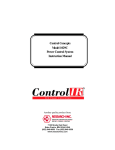
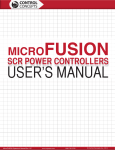

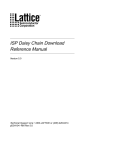
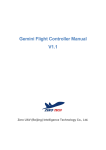
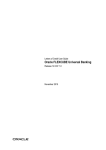
![[December] [2011] Oracle Part Number E51535-01](http://vs1.manualzilla.com/store/data/005639894_1-7cab28abe75641f653b0af59966ce958-150x150.png)
